In a groundbreaking leap for warehouse automation, Amazon has introduced Vulcan, its first robot equipped with a sense of touch akin to human dexterity.
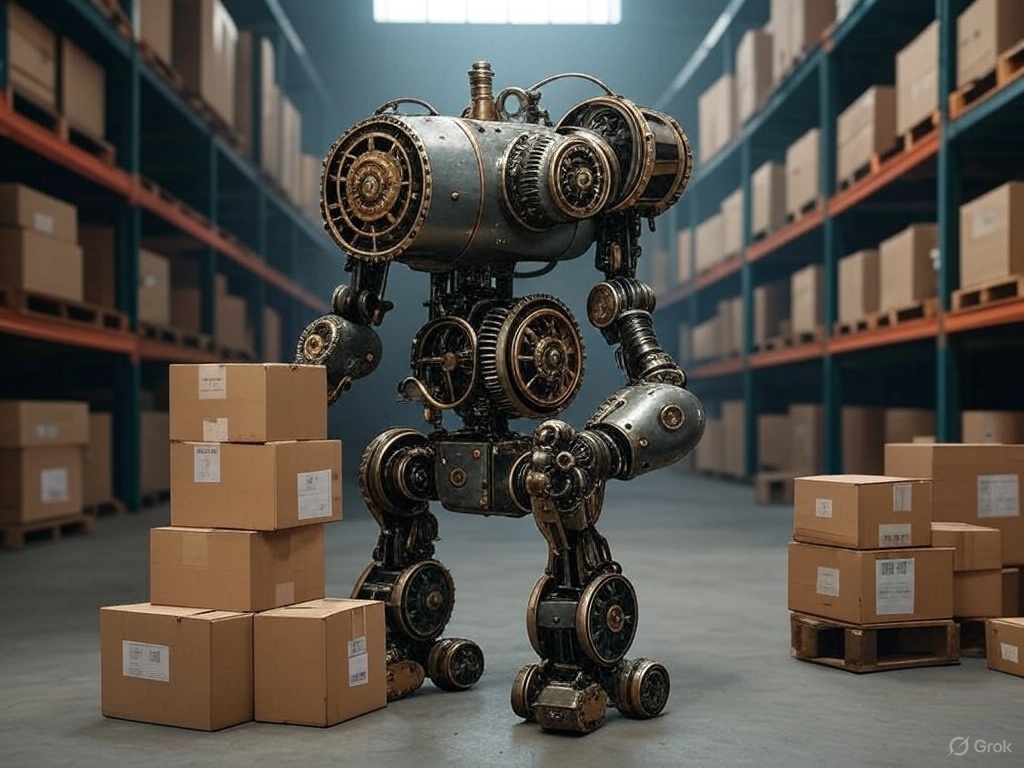 Unveiled at the company’s “Delivering the Future” event in Dortmund, Germany, on May 7, 2025, Vulcan represents a significant advancement in robotics, blending physical artificial intelligence (AI), tactile sensors, and machine learning to transform how Amazon handles inventory in its vast fulfillment centers.
Unveiled at the company’s “Delivering the Future” event in Dortmund, Germany, on May 7, 2025, Vulcan represents a significant advancement in robotics, blending physical artificial intelligence (AI), tactile sensors, and machine learning to transform how Amazon handles inventory in its vast fulfillment centers.
This innovative robot is designed to perform tasks previously exclusive to human workers, raising both excitement and concerns about the future of warehouse labor.
A Robot That Can “Feel”
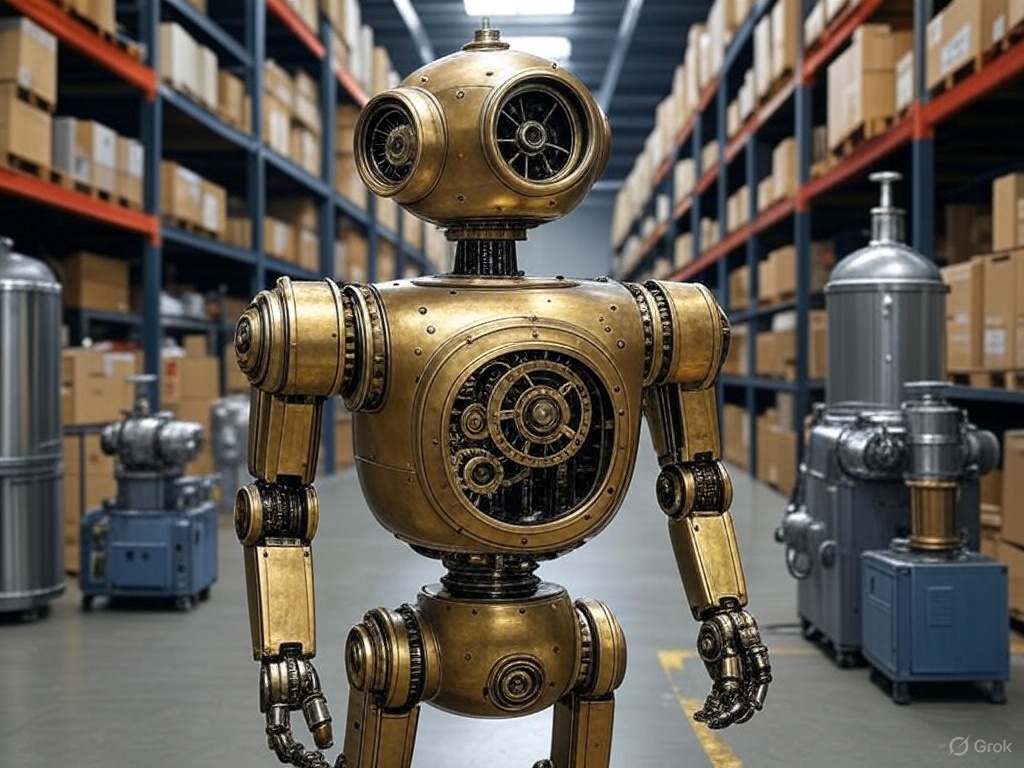 Unlike traditional industrial robots, which Amazon’s Director of Robotics AI, Aaron Parness, describes as “numb and dumb,” Vulcan is engineered to sense and adapt to physical contact.
Unlike traditional industrial robots, which Amazon’s Director of Robotics AI, Aaron Parness, describes as “numb and dumb,” Vulcan is engineered to sense and adapt to physical contact.
Equipped with force feedback sensors and an AI-powered manipulator, Vulcan can detect pressure, torque, and resistance, allowing it to handle objects with precision and care.
This tactile capability enables the robot to pick and stow approximately 75% of the millions of unique items in Amazon’s inventory, from fragile electronics to soft textiles, at speeds comparable to human workers.
Vulcan’s “end-of-arm tooling” is a unique design, likened by Amazon to “a ruler stuck onto a hair straightener.” The “ruler” component pushes items aside to create space in crowded storage pods, while the “paddles” gently grip and insert items using built-in conveyor belts.
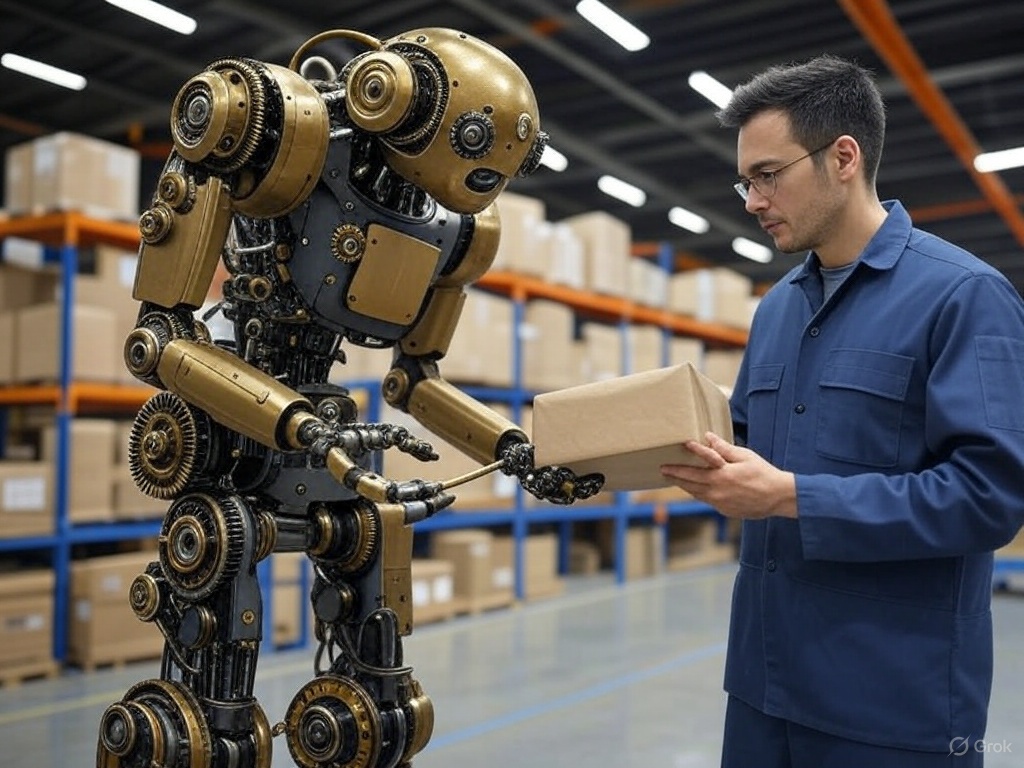 For retrieving items, Vulcan employs a suction cup paired with an AI-driven camera to ensure accurate selection, minimizing errors such as picking up multiple items by mistake — a process Amazon engineers call avoiding “co-extraction.”
For retrieving items, Vulcan employs a suction cup paired with an AI-driven camera to ensure accurate selection, minimizing errors such as picking up multiple items by mistake — a process Amazon engineers call avoiding “co-extraction.”
The robot’s ability to learn from real-world interactions sets it apart. Trained on thousands of physical examples and continuously improving through trial and error, Vulcan adapts to new challenges, much like a human learning on the job. “It’s a technology that seemed impossible just three years ago,” Parness noted, emphasizing its potential to reshape warehouse operations.
Also read:
- Not Quite Terminators: Robots Lag Behind Humans in China’s First Half-Marathon Showdown
- Ethereum’s Pectra Upgrade: What’s Changed for Regular Users and How Quasacoin (QUA) Benefits
- GTA 6 Second Trailer Drops: A Glimpse into Vice City’s Criminal Underworld
Enhancing Efficiency and Safety
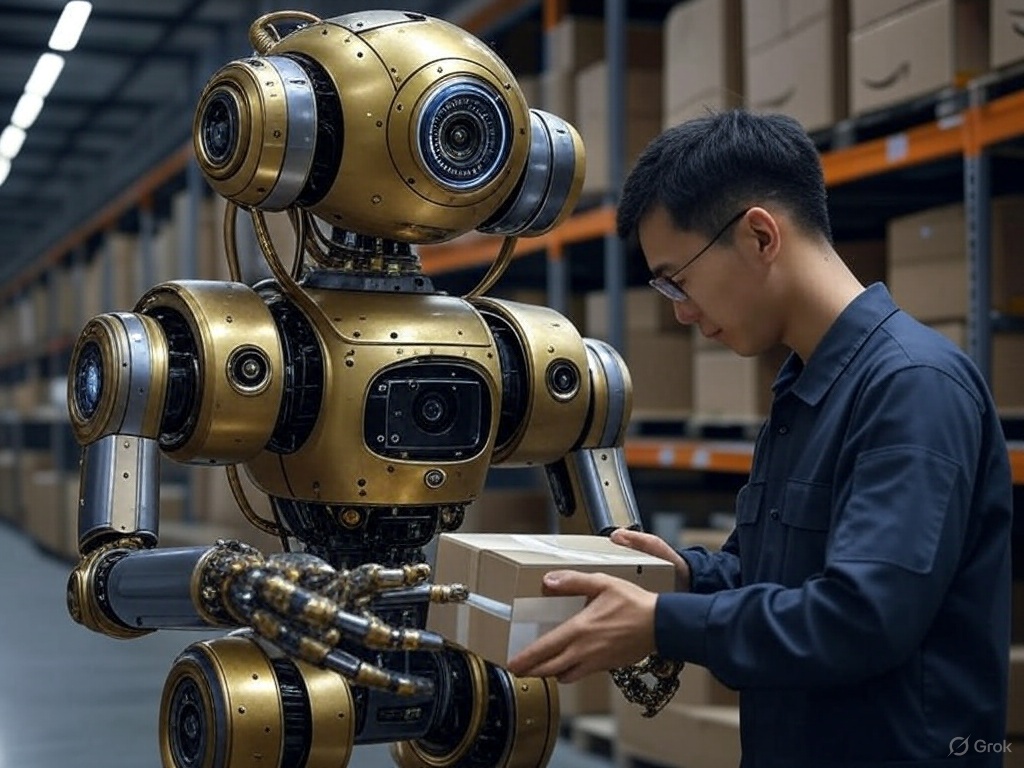 Vulcan is already operational in Amazon’s fulfillment centers in Spokane, Washington, and Hamburg, Germany, with plans to expand across the United States and Europe by 2026.
Vulcan is already operational in Amazon’s fulfillment centers in Spokane, Washington, and Hamburg, Germany, with plans to expand across the United States and Europe by 2026.
The robot is tasked with handling inventory in high and low storage pods—areas that typically require human workers to use ladders or bend down, posing ergonomic challenges. By taking on these physically demanding tasks, Vulcan aims to reduce worker strain and improve workplace safety.
Amazon highlights Vulcan’s role as a collaborative tool rather than a full replacement for human labor. The robot can identify when a task exceeds its capabilities and request human assistance, ensuring seamless teamwork. “Vulcan works alongside our employees, and the combination is better than either on their own,” Parness stated.
The company also points to new job opportunities, such as robotics maintenance and monitoring, as well as upskilling programs to help workers transition to technical roles.
The Future of Warehouse Labor
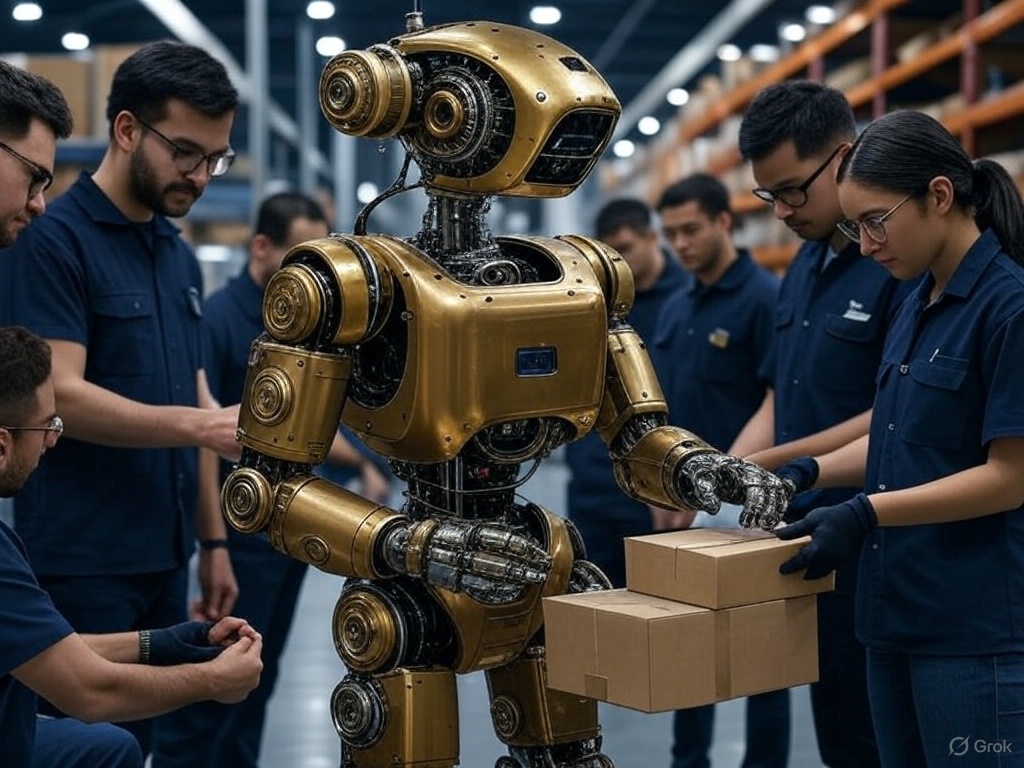 Despite Amazon’s assurances, Vulcan’s capabilities have sparked concerns about job displacement.
Despite Amazon’s assurances, Vulcan’s capabilities have sparked concerns about job displacement.
With over 750,000 robots already deployed across its fulfillment centers and a reported reduction of 100,000 human employees between 2022 and 2024, the introduction of Vulcan fuels fears that automation could significantly reduce the need for human workers.
Vulcan’s ability to operate 20 hours a day and handle up to 8-pound items at human-like speeds underscores its potential to reshape the workforce.
Critics argue that Vulcan’s human-like touch could accelerate automation trends, particularly for low-skilled and temporary workers. Economists at Goldman Sachs estimated in 2023 that generative AI and automation could impact 300 million jobs globally by 2030, and Amazon’s advancements may contribute to this shift. In the UK, unions like GMB have raised alarms, with national secretary Andy Prendergast calling Amazon’s automation push a “tacit admission” of unsafe working conditions.
However, Amazon’s leadership remains optimistic about human-robot collaboration. Tye Brady, chief technologist of robotics at Amazon, likens Vulcan to R2-D2, emphasizing its role in amplifying human potential by handling “mundane and repetitive” tasks. Parness echoes this sentiment, dismissing the idea of fully automated warehouses: “If we had to get Vulcan to do 100% of the stows and picks, it would never happen. Amazon understands this.”
A New Era for Robotics
Vulcan marks a pivotal moment in Amazon’s robotics journey, building on a legacy of systems like Sparrow, Robin, and Proteus. Its tactile sensing and AI integration not only enhance efficiency but also set a new standard for robotic dexterity in high-contact, cluttered environments.
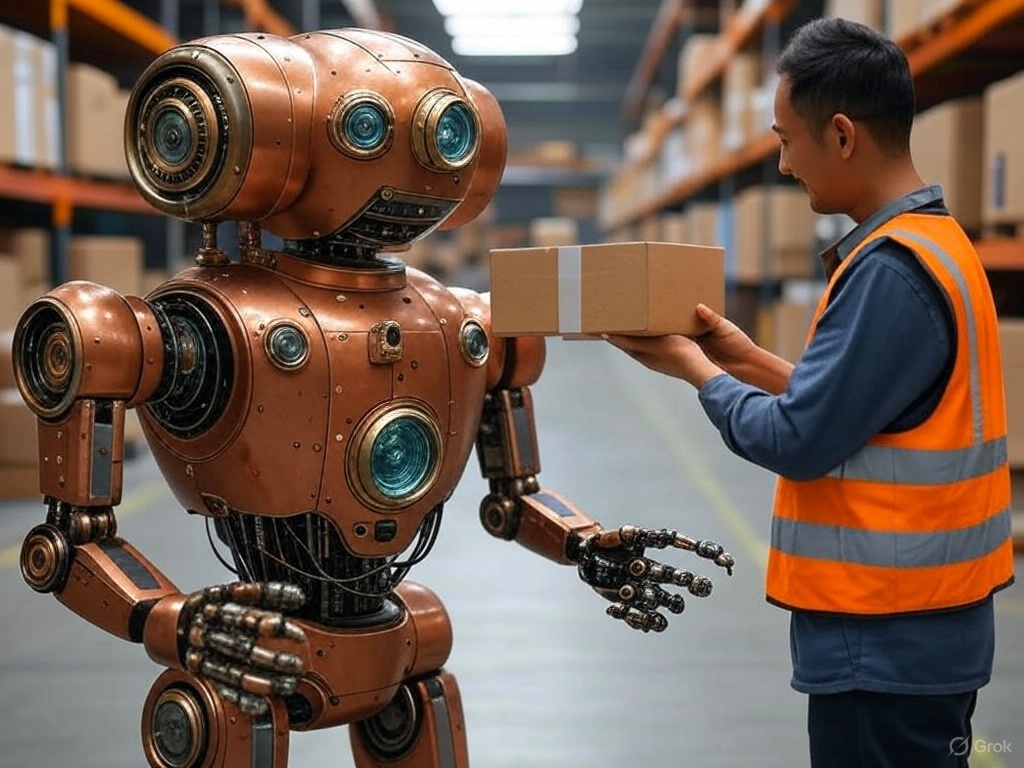 As Amazon scales Vulcan across its global network, the robot’s impact will likely extend beyond warehouses, influencing how other industries approach automation.
As Amazon scales Vulcan across its global network, the robot’s impact will likely extend beyond warehouses, influencing how other industries approach automation.
For now, Vulcan is a testament to Amazon’s innovation, blending cutting-edge hardware and physical AI to mimic human capabilities.
Whether it becomes a trusted partner or a harbinger of job losses, Vulcan’s “sense of touch” is undeniably pushing the boundaries of what robots can achieve. As one X user put it, “This isn’t just a leap in warehouse automation. It’s a quiet revolution in what we thought only humans could do.”
Sources:
- CNBC, WIRED, TechCrunch, The Verge, AboutAmazon, CNET, The Guardian, Mashable, GeekWire, InterestingEngineering, ChainStoreAge, The Mirror, SiliconANGLE, RoboticsAndAutomationNews, IEEE Spectrum, TechSpot, FingerLakes1, AndroidPolice, KnowTechie, News9Live web:0-24






